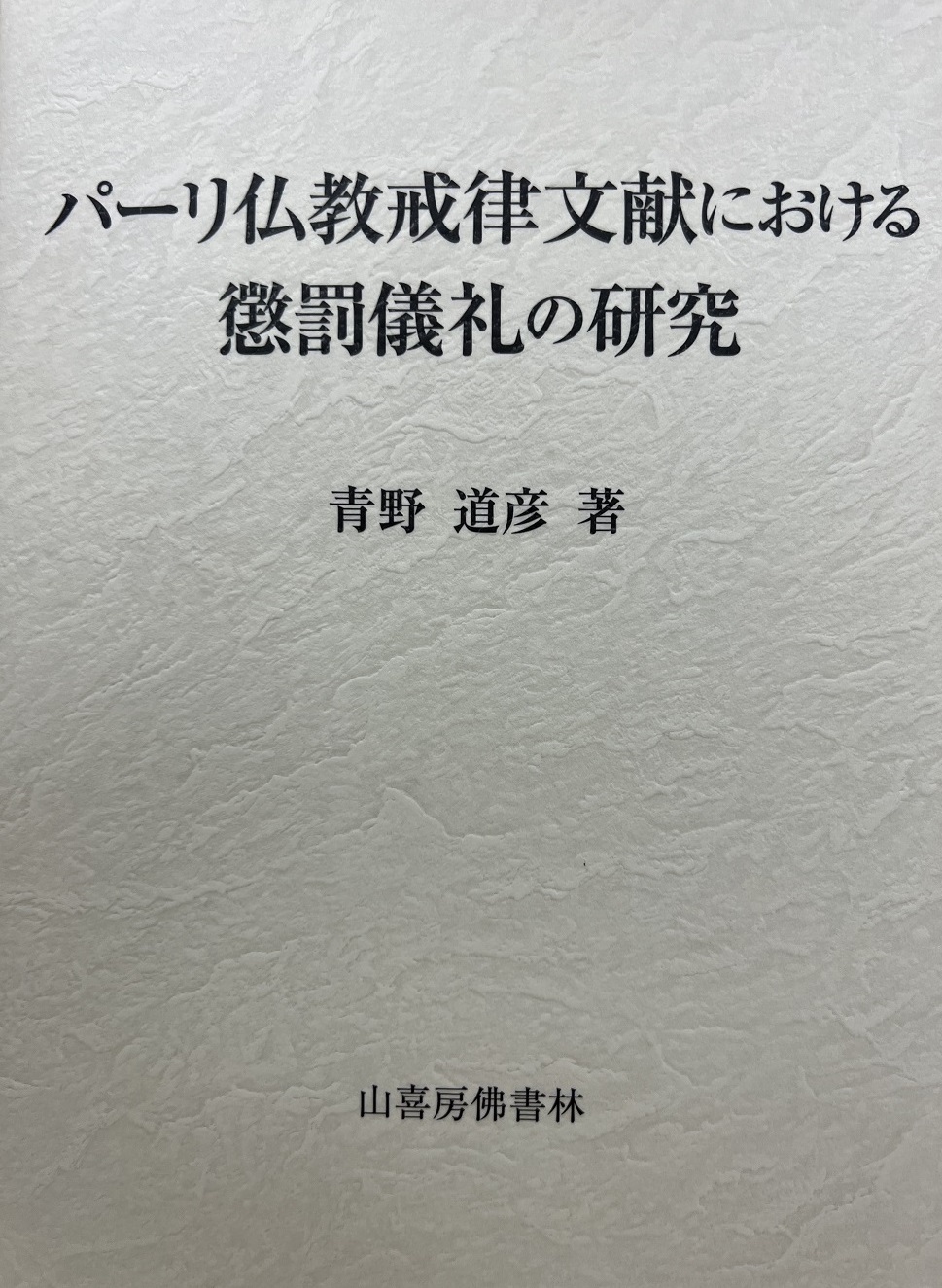
Title
Pāri bukkyō kairitsu bunken ni okeru chōbatsu girei no kenkyū (A study on the disciplinary procedures in the Pāli vinaya texts)
Size
526 pages, A5 format
Language
Japanese, Norwegian
Released
March 27, 2020
ISBN
9784796303309
Published by
Sankibō busshorin
Book Info
See Book Availability at Library
Pāri bukkyō kairitsu bunken ni okeru chōbatsu girei no kenkyū
Japanese Page
Vinaya texts are collection of the monastic rules of Buddhist monks and nuns. There exist several kinds of vinaya texts which belong to different traditions and are written in different languages. The main sources of this book are the Vinayapiṭaka and its commentaries, which have been handed down by the Theravāda Buddhism in Pāli language.
The vinaya texts cover a broad range of topics such as various kinds of prohibitions, various manners of daily life, higher ordination (upasampadā), observance (uposatha), rainy retreat (vassāvāsa), boundary (sīmā), acceptable clothes, acceptable foods, acceptable housing, acceptable remedies, disciplinary procedures, and method of dispute settlement (samatha). Since it is difficult to give careful consideration to all these topics at the same time, it is necessary to choose one topic. Thus, in this book I focused on disciplinary procedures to examine them in as much detail as possible.
The disciplinary procedures are punishments executed by a Buddhist monastic order on a member who commits a serious problematic act that puts the Buddhist monastic order into danger. There are nine types of disciplinary procedures such as tajjaniyakamma, nissayakamma, parivāsa, and tassapāpiyyasikākamma. A monk or a nun punished by the Buddhist monastic order is subject to various restrictions and loses a lot of rights which regular monks and nuns possess.
Regarding the disciplinary procedures, there are pilot studies by Mitsuo Sato and Édith Nolot. With reference to these studies, I looked into relative passages scattered in the vinaya texts as comprehensively as possible and clarified the overall picture of the disciplinary procedures. The comprehensive research characterizes this book.
In order to carry out such a comprehensive research, it is necessary to deviate from the conventional approach to the vinaya texts. In the Buddhist study community, it has been dominant to treat vinaya texts as historical materials. For example, the development history of Buddhist monastic order and the formation history of vinaya texts have been discussed from a diachronic perspective. It is certain that many researchers achieved great results from this viewpoint, but they often overlooked parts of the legal system that are not directly linked to the history of development. Since it is necessary to glean such parts in this book, I decided to suspend the historical viewpoint.
The decision made it possible to make comprehensive research to the legal system of the disciplinary procedures, but it also made this book lack historical aspects. This may dissatisfy many researchers who are interested in the real picture of the Buddhist monastic order. However, since the real picture of the Buddhist monastic order consists of three elements: legal system prescribed in the vinaya texts, reality faced by monks and nuns, and the intention of monks and nuns who face both the legal system and the reality, I am sure that the elucidation of the legal system of the vinaya texts is useful to understand the real picture of the Buddhist monastic order.
(Written by: AONO Michihiko / April 04, 2022)



